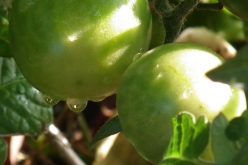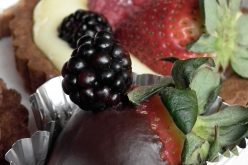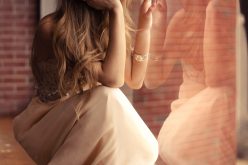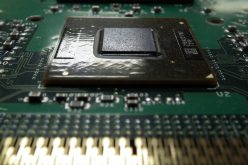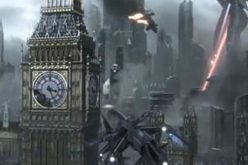PROFILE | Jordan Poorman Cocker: Native American art and Indigenous art are critical to understanding who we are as Americans
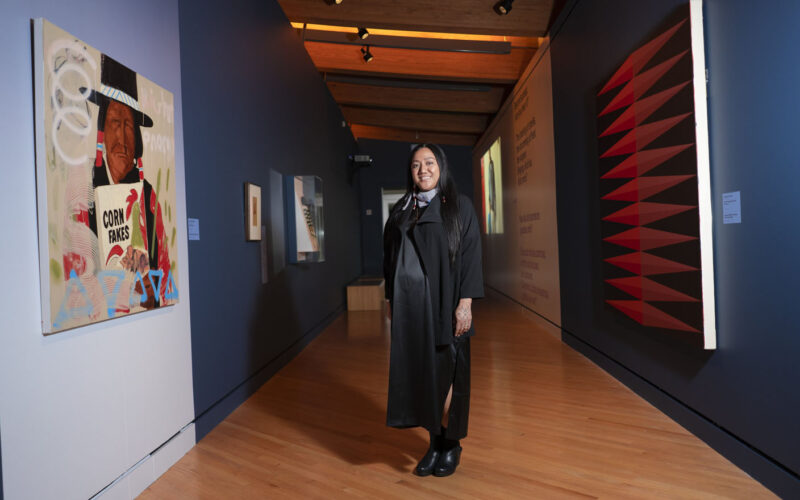
April Wallace
awallace@nwaonline.com
When Jordan Poorman Cocker was a young girl, growing up in the Kiowa tribe with a mother who was a beadworker, she would often find herself at the kitchen table with her mom, aunt, sister and others. First they cleared it, and then set to work to complete purses, dresses, necklaces and moccasins together.
Being in the room made for a fun and lively time. More often than not they’d set out little chocolates and crackers, tea or juice to share and no phones were around to distract them. In its place, they had conversations and maybe a little gossip. And as Fleetwood Mac would come on, the group would go on a journey of great music and visiting.
“It’s very social because everything that we create, especially culturally, requires a process of preparation,” Cocker said. The beadwork would come out of the visit as they all were making items at the same time. “For Kiowa people, creating something for someone, is often what we do, sort of a gesture of love and adoration, so it takes multiple hands oftentimes to realize the completion of a piece.
“It’s always nice to create as a family, and together.”
Cocker’s family has been beadworkers for many generations, but the artistry finds you, she said. While Jordan’s siblings did beadwork and made dresses in the past, she was the one in the family who was really drawn to it and enjoyed it as a social and meditative process.
These days she’s making others’ works available to a much larger audience in her day-to-day work.
Jordan Poorman Cocker has been curator of Indigenous Art and Native American Graves and Repatriation Act Officer at Crystal Bridges Museum of American Art for more than a year, and is on the boards of the Going Home Fund, which is funded by the Melon Foundation, and the Native American Art Studies Association.
This month “American Sunrise: Indigenous Art at Crystal Bridges,” which Cocker curated, opened to the public and will be on view through March 23, 2025. It features the beauty and intricacy of the museum’s Indigenous art collection and includes new acquisitions of works by Native artists, according to a press release.
“Jordan and I have worked on a few projects, including the recently opened ‘Knowing the West’ traveling exhibition at Crystal Bridges,” said Christina Burke, curator of Native American Art, who is also on the board of the Native American Art Studies Association with her. “In each and every connection, Jordan is a thoughtful and generous contributor, always willing to work to do what she can to make the project better.
“Jordan is particularly good at seeing the big picture and providing unique insights as a Native scholar.”
Currently Cocker is co-curating the re-installation of Crystal Bridges’ permanent collection galleries, which will be opening in 2026. Next month, she will be teaching a workshop on how to make moccasins at the Heard Museum in Phoenix.
Cocker is also co-curating an exhibition with the Block Museum of Art, which is based in Evanston, Ill. and connected to Northwestern University campus. “Woven Being, Art for Zhegagoynak” opens this January.
“I’m really happy, I’ve been curating that for five years with them and so I’m excited to see that show come to fruition,” she said.
Cocker began in the art curation field about nine years ago, when she earned a masters from the University of Victoria in Wellington, New Zealand. Te Papa Tongarewa, the national museum of New Zealand that centers and leads the world in Indigenous museum policies and practices, is where her career started.
Over the last few years she’s worked with museums, such as the Gilcrease Museum in Tulsa, where her position as a curatorial scholar was grant funded by the Henry Luce Foundation. During that couple of years, Cocker researched the paintings collection, and developed a body of articles, essays and text about it that remain online.
“I really loved that collection, it’s a huge, historical collection,” she said.
Prior to coming to Crystal Bridges, Cocker worked with the Osage Nation Museum in Pawhuska, Okla. as collections manager. For the past couple of years, she’s been teaching and mentoring artists in the MFA and studio arts program of the Institute of American Indian Art, which is based out of Santa Fe.
GREET THE SUNRISE
“American Sunrise: Indigenous Art at Crystal Bridges” showcases artwork from the American art museum’s permanent collection that spans 150 years, and has expanded its Indigenous art collection in the process.
Cocker said the exhibit is inspired by Joy Harjo’s (23rd poet laureate of the United States) book, in which her poetry opens a dialogue with American history through the lens of Indigenous people’s relationship to the land across time.
“For me, the show really examines not just the stories of American art through the artworks but the ways we, as curators, are really telling those stories,” she said. “The central question of the exhibition is ‘How do our connections to art and place — going back to Harjo’s construction of the land — reshape what we know about America?’”
The exhibition prioritizes artist voices and perspectives. It foregrounds artist-led narratives through author labels, guest writers and artist interviews, which are in both the gallery and online.
For American Sunrise, in addition to the pieces from its permanent collection, six works were loaned to Crystal Bridges; nine new acquisitions were made, as well as six new commissions.
Among the new acquisitions are monumental portraits by Osage artist Ryan RedCorn, “Final Ikwe,” a work by Andrea Carlson, who was an artist in residence at the Momentary a couple years ago; “Big Hat Energy” by Frank Buffalo Hyde; a work by Cara Romero titled “The Zenith,” “which is really playful,” Cocker said, as well as a beaded necklace by Bobby “Dues” Wilson — and those are just the highlights.
The six new commissions are absolutely phenomenal, Cocker said, including a “basket of resilience” by Kelly Church titled “Sustaining Traditions into the Future.” Church uses Black ash as a material to weave baskets in a traditional way. This one is four feet tall and has copper detailing.
For Church’s commission, Cocker asked her for a work that would complement the Crystal Bridges collection, but also take a step for her artwork. In response, Church referenced the baskets of burden, an anthropological term used for Great Lakes region tribal community baskets that are used for harvesting.
“They’re three to four and a half feet tall, worn on the back historically,” Cocker said. The anthropologists who were documenting Indigenous people in the late 1800s and 1900s termed them baskets of burden. “But she wanted to create a basket of resilience.”
It’s what she calls a future-facing basket. Informed by historical methods and techniques of weaving that are found in Native American art collections across the country, but used to provide hope for the future. It’s inspiration for resilience through the decimation of the Black Ash Trees and other forms of colonialism.
“There are some really stunning pieces,” Cocker said. Other commissions are “Sheyahtse Warrior” by Jerry Redcorn and folks like Jane Osti, a Cherokee ceramicist, and “Right Now” by Roy Boney. “We have some really beautiful works in the exhibition and I’m so excited for the public to be able to enjoy them.”
As a curator, Cocker has the privilege of working with incredible artists from all around the country and beyond while building Crystal Bridges’ collection through new acquisitions, through research and scholarships, writing essays and more.
“Something that has been a highlight of my tenure so far is working in close dialogue with artists regionally and nationally to really think deeply about the roles and responsibilities that major American arts museum have to Indigenous art and communities,” Cocker said. Consultation with artists is important to her. And a big component of research centers oral histories and first-voice methodologies.
“It’s been such a gift over a year or two to work with artists and create new research for ‘American Sunrise’ for the collection and then of course intersecting with these other exhibitions and projects.”
KNOWS HER OWN MIND
Jordan Poorman Cocker was raised in Oklahoma City and a suburb just north of it, Edmond, Okla., where she lived with her sister, brother and parents. She grew up watching her mother be called upon to create dresses and adornments, picking up a deep appreciation of it. Jordan enjoyed the process so much she didn’t shy away from the process of creating with her, even as a teenager.
“From an early age, I have always loved art and been drawn to art,” she said. Jordan loved the whole process of starting something new, choosing colors and patterns; working on it and completing it. She always gravitated toward the process of crafting and beadworking. “In high school I was really always looking forward to sitting down with (my mother) and making together and crafting together.
“It’s stuck with me throughout my career and throughout these different periods of education and now teaching.”
Young Jordan stayed active through school, where she played soccer and cheered; and through her family, which enjoyed volleyball, and began a rugby team for her brother. But dancing was a special activity.
In elementary school, a lot of Jordan’s friends did ballet, so at first she began to dance to follow the crowd, but it became something more. It was a way to learn a discipline, to practice and realize what it means to transition from one level to the next.
Up through age 10, she was part of the Oklahoma City Ballet and looked up to Maria Tallchief, the first prima ballerina for the U.S., and the first Osage Tribe member to hold the rank.
When Jordan’s older sister Rachel went off to Classen School of Advanced Studies Visual and Performing Arts, a performing arts school for grades 6-12, she began to really enjoy it. It wasn’t long until Jordan was asking to go, too.
“Of course as a younger sister I wanted to do everything that she did,” Cocker said. Luckily “my parents were so supportive of my creativity and my education,” and she got the greenlight from them.
But Jordan had to audition to get in. Back then her craft was theater, and looking back the study has had long lasting effects, aiding her in the act of public speaking that would become a part of her job as an adult.
Cocker got in, and as a result throughout her middle school, junior high and high school years, she got what she would call a Reggio Emilia approach to education, where theater performance and different art forms were prioritized and centralized across the curricula, even in math and science courses.
In high school, it was a world literature teacher, Mr. Reed, who encouraged Jordan in the area of creative writing. She had never considered herself a writer, but he caused her to think about it.
“It’s interesting because now as a curator, I do spend a lot of my time researching or writing for catalogs or exhibition labels or essays, the odd article in a magazine,” Cocker said.
As a child, Jordan dreamed of being a singer. By the time she was a teenager looking for colleges, after years of theater study, she was influenced by a love of set design and lighting.
COMING INTO HER OWN
After high school graduation, Jordan followed her sister’s footsteps once again this time to Auckland, New Zealand for university. Though she didn’t remember living there in her early life, “it was intuitive to me to go there and meet members of my dad’s family as well,” she said. Not to mention the country’s stunning beauty made it an appealing place to live.
Choosing a mode of study was straightforward after the education she’d had at the performing arts school. Jordan began as a design student and “surprisingly it didn’t change, ” she said. “I have always sort of had a vision for what I liked and disliked and I really didn’t change from that.”
Spatial design is an intersectional discipline, Cocker said, that considers architecture, public space and art installation. Ultimately, she took it in the direction of the latter. But producing art, thinking about it and valuing the place of art in daily life has been a constant of her life.
While in her early 20s, Jordan’s medium was moving image/videography and art installation, and the subject matter always featured material culture.
“Even though I wasn’t producing beadworked pieces or sculptures, the imagery and the subject matter was still centered on moving image,” she said.
As an undergraduate, her works appeared in some exhibitions and she participated in a couple of festivals, including the Prague Quadrennial, for which she created an art installation; as well as one called “The Grandmother Project,” which was featured in Women in Architecture Week. That project used moving image and oral histories to create an installation.
Going to university in New Zealand and starting her career there was among Cocker’s most impactful experiences of her life.
“I was exposed for maybe the first time at a national level to Indigenous museum practices and policies,” she said. As a student and emerging professional, “I was inspired to see the levels of decolonialism that took place in museum spaces.”
There, Indigenous communities would go to museum spaces for celebration and they and their cultures were seen in a contemporary way.
“There was a level of pride and happiness that different communities experienced because of that, which starkly contrasted my experiences growing up in Oklahoma, where the only Native American people you might see in museum spaces were janitors,” Cocker said. “Folks were not hired to curatorial positions and director positions… that’s likely due to racism.”
In New Zealand, Jordan was seeing what it looked like to experience art that is inclusive of Indigenous stories and of the people themselves. It was the experience of attending those museums, like Te Pappa, where Indigenous languages were used on the works’ labels and exhibitions were Indigenous led and curated, that produced “such a rich feeling of belonging and excitement that it really was a turning point for me,” Cocker said. It wasn’t until then that she began to consider museums as a direction for her career.
In her early 20s, Cocker received an invitation to a research assistant position as a part of a cohort called Pacific Spaces, led by Dr. Albert Refiti, and the position played to her enjoyment of history and collection-based learning. The scholars in that network encouraged her to engage with the research outside of class, which took her to conferences and gave her opportunities to organize journals.
Later she would land an internship at the national museum of New Zealand, working on collections management and learning object space work on their vast collections. Following that, she went to the Gilcrease Museum, helping prepare them for reinstallation and expansion, which is now underway.
Since then, one of Cocker’s favorite experiences was getting a call from the Museum of the Cherokee People that wanted to help return a cradle board, a framework that Indigenous peoples used to carry babies, back to the Kiowa tribe. They didn’t have much information about it, only a last name: it belonged to the Onco family. Jordan and her mom did some digging and determined it belonged to Mrs. Anita Onco; the cradleboard had been made for her aunt.
“It’s the first cradleboard to come back to Kiowa Tribe collection and museum in the last century,” Cocker said. “It was such a beautiful moment for connection, but also emphasized the potential and what I foresee as the future of repatriation sort of beyond NAGPRA (Native American Graves Protection and Repatriation Act) and really thinking about ethical returns and returning items that may not be culturally sensitive but do belong to a community.
“The work is so great, it provides folks with resources to facilitate those returns.”
Native American art and Indigenous art are critical to understanding who we are as Americans and who we are as midwesterners, Cocker said. “If we don’t have an awareness of that artwork in the present, historically we don’t have an understanding of American art.”
There are many artists and educators who have been doing the work of raising that awareness, supported the growth of artists and artist networks over time, she said. “I hope that everyone …. remembers they’re on Indigenous land always in the United States. Having that awareness makes us better as a community and better as people.”
—
Self portrait
Jordan Poorman Cocker
Family: My husband is Christopher Cote, he’s a language revitalizationist and language teacher for the Osage Nation. We met at a cultural event six or seven years ago now and have been married for two years.
What was your first date? We ended up going to the Wichita Mountains, the oldest mountain range in the state. It’s beautiful and has so many great trails. Ended up going for a hike together and to a place only locals know, Ann’s Country Kitchen, and had some great bison meals.
Even now, I love: the land. I love swimming, I love going for hikes in the Wichita Mountains and shooting guns on family land and enjoying what it means to be deeply connected to Oklahoma as a place, as a home.
My favorite dish(es) at a ceremony: I really love kidney. It’s just really delicious salted, something I look forward to because it’s sort of niche to Indigenous communities. (I say that but people in Scotland and Ireland eat haggis, organ meats are eaten differently in different communities.) Corn soup is another one of my favorites, paired with pork or bison, usually something a little bit fatty, a protein that has some flavor.
When you create now, what is your main medium? Now specifically with beadwork, I incorporate textiles and beads and other mixed media to create pieces.
What influenced your love of material culture, caring for and producing it? Growing up on the reservation and spending time at our ceremonial and social gatherings deeply influenced that love, and also considering the value systems, the non-western value systems, embedded in those art forms.
What was your very first job? My first nonprofessional job was when I was in fourth grade, I was a page for the Oklahoma State Capitol, which was fun. I did it after school for a couple of weeks. I had this little blazer I wore, as a tiny intern for the state capitol. It was my first time to wear heeled shoes, they didn’t fit very well.
Education: Bachelor of Design, focusing on spatial design, from Auckland University of Technology, which is in Auckland in New Zealand; and a Masters of Museum and Heritage Practice from Victoria University of Wellington, also in New Zealand. I’m currently teaching and just working hard; expanding and continuing on that scholarship.
Something you may not know about me: I lived in Oklahoma all the years I can remember, but when I was super small, my family lived in New Zealand. I was younger than four, so I didn’t really remember it.
A time of year you looked forward to as a child: I looked forward to a ceremony by the Kiowa Black Leggings Warrior Society. It used to happen twice a year and now it’s once a year. It’s for veterans, to celebrate the impact of veterans on our lives, particularly Kiowa veterans.
What happens then? Our family holds camp … once a year in October and it’s just such a great time. I look forward to seeing family, it’s almost like a reunion, cousins that I haven’t seen most of the year and eating some really great home-cooked food.
Where is it? At a place called Indian City, which is now owned by Kiowa Tribe, so it’s just south of a small town called Anadarko on our reservation and it’s just beautiful. I love the plains and the forest and being able to play and going to attending the ceremony itself.


